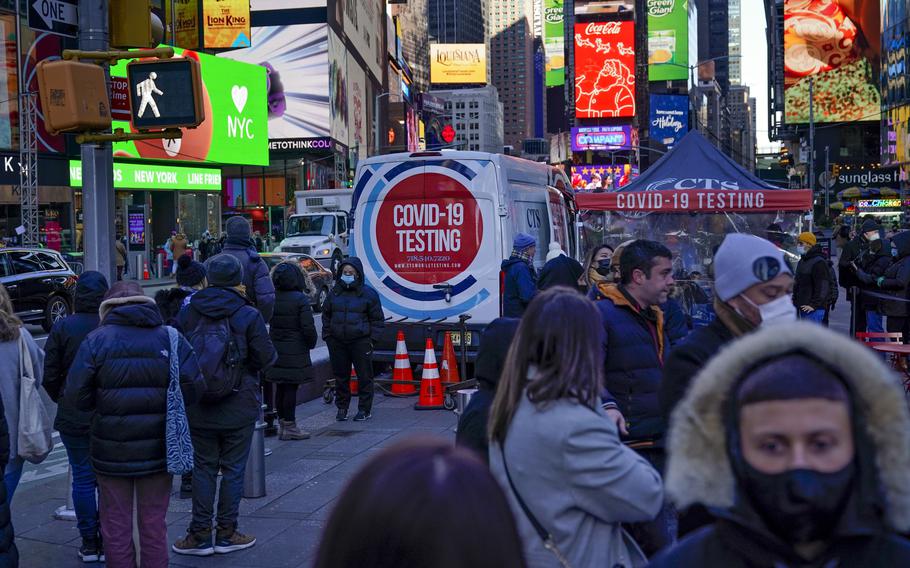
The country’s population increased by 392,665 in the year ending on July 1, 2021. Some of the reduced rate of growth can be attributed to decreased immigration, reduced fertility and an aging population, trends underway before the pandemic. But the pandemic helped push the rate down to almost flat growth. (Seth Wenig/AP)
The United States’ population grew by just 0.1% in the past year, the lowest rate since the nation’s founding, according to estimates released Tuesday by the Census Bureau - a slowdown in which the coronavirus pandemic had a major role.
The country’s population increased by 392,665 in the year ending on July 1, 2021. Some of the reduced rate of growth can be attributed to decreased immigration, reduced fertility and an aging population, trends underway before the pandemic. But the pandemic helped push the rate down to almost flat growth.
“We knew it has had a lot of economic impact, a lot of social impact; this shows it has had a big demographic impact that is going to last us for several years,” said William Frey, a senior demographer at the Brookings Institution.
In the past decade, the rate of growth was the slowest since the United States began taking a census, with the exception of the 1930s during the Great Depression. But covid has exacerbated the trend. More than 800,000 people have died in the United States since the pandemic began, and mortality has also risen among people who had indirect negative health outcomes because of the pandemic.
Over three-fifths of the growth this year, or 244,622 people, is estimated to be from net international migration, or the difference between the number of people moving into the country and out of the country. Natural increase, or the number of births minus the number of deaths, was estimated at just 148,043 people, a reduction of 84% from two years ago. It is the first year that net international migration has exceeded natural increase, according to the bureau.
Kenneth Johnson, a sociology professor and senior demographer at the University of New Hampshire’s Carsey School, called the sharp decline in natural increase “stunning” and said covid played a central role. “In addition to 475,000 deaths directly attributable to COVID during the period, it also increased mortality by hindering people’s access to treatment for other health conditions, discouraged people from having babies, and reduced immigration,” he wrote in an analysis of Tuesday’s estimates.
The increased rate of slowdown could have dire implications for the country if it persists, leading to problems such as too few young people to supply the labor force, Frey said.
“These are numbers you see in some Eastern European countries. It does make you stand up and take notice. It’s really a benchmark we hope we don’t see too often.”